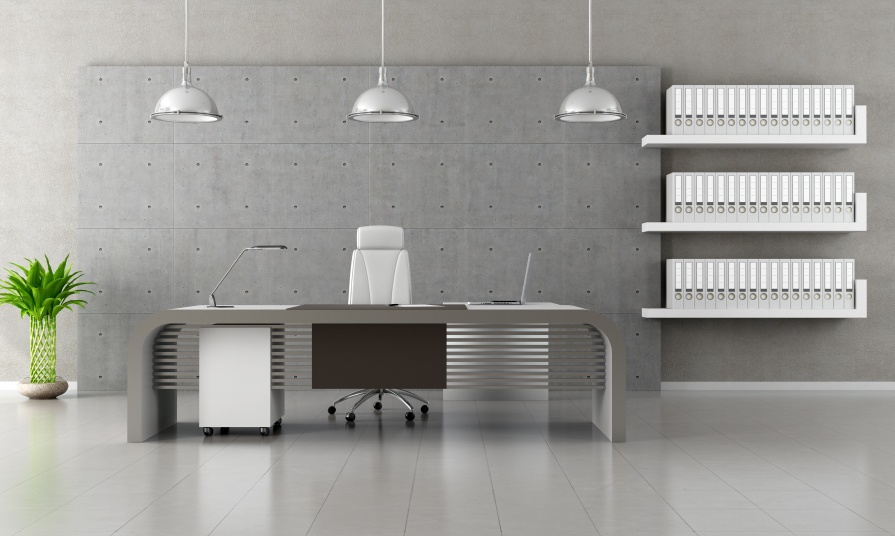For many, figuring out how to get organized at work can be a daily struggle. Papers pile up, sticky notes multiply and emails flood your inbox faster than you can sort through them. This holds especially true when you are focused squarely on your ONE Thing. When we channel the majority of our energy into our most important work, we can sometimes let tidiness slide.

Organization is a key component of productivity. When clutter accumulates, our attention diminishes and performance can suffer as a result. When your brain, time, workspace and projects are organized, it becomes easier to streamline both your actions and thoughts. We looked into some of the most effective ways to get organized, in every sense of the word, so that productivity will come naturally.
Follow the tips below to help get yourself in the right mindset so organization becomes second nature at the office.
You can also listen to an episode on The ONE Thing Podcast on How to Get Organized at Work. (Subscribe to the podcast on your podcast player of choice).
Organize Your Brain
Get Enough Sleep – Sleep deprivation does a number on our grey matter. Anyone who has experienced a restless night can tell you that mental acuity diminishes with every hour of sleep we lose. Aim to get around seven hours of sleep each night and consider working in power naps during the afternoon to reenergize at the end of the workday.
Make an Effort Not to Multitask – Going back and forth between various tasks does nothing but slow our brains down and cloud our judgment. Trying to do two or more things at once can even release the stress hormone cortisol in the brain, which can impact your ability to concentrate and make decisions.
Take Breaks – David Levitin, a neuroscientist and author of The Organized Mind, suggests that people should take breaks at work to allow the brain to daydream. It’s during these periods that our brains are most creative and it helps give us a productivity boost.
Organize Your Time
Start with Goals – When organizing your time, the first thing you should do is identify your goals. Goals help us focus our energy and serve as a starting point for identifying what we need to get done. Download our free Long-term Goal Worksheet to help pinpoint your top goals for the next year and beyond.
Outline Your Priority – Once goals are identified, your priority will become clear. Your priority is the most important task that you need to complete in order to accomplish your most important goal and move things forward.
Time Block Each Day – A lot of emphasis gets put on time blocking in The ONE Thing because it works. The concept is simple – create a schedule for each day squaring away time for every task you need to complete. This creates deadlines and puts time limits to tasks, making it an automatic time organizer.
Related: Interested in learning more about time blocking? Join our free online training.
Organize Your Workspace
Have Everything You Need Within Reach – Take a careful inventory of everything you use on a regular basis to get things done at the office. Keeping these items at your desk or on your computer will maximize productivity and make organization easier.
Get Rid of the Non-Essentials – Clutter is a distraction. We’re not saying that your desk needs to be a fun-free zone, but cutting out non-essentials will make a workspace more functional and productive. If you haven’t used something in the past six months, get rid of it or store it away somewhere off your desk and out of eyesight.
Put Paperwork in Its Place – Piles of paperwork are one of the biggest organization pitfalls. Instead of letting paperwork stack up, create a filing system that is based on the one-touch method. Make different files for each project or client, and when a document comes across your desk either act on it, trash it or file it away. Once the project is complete go back through the file and get rid of anything that isn’t essential.
Organize your Virtual Workspace – Your e-mail is its own workstation. Organize it the same way you would organize your paperwork – files and a one-touch system. Apply the filing system to your electronic files as well. Another strategy to consider is to develop a time block for checking your e-mail only two or three times a day so it doesn’t become a time-sucking distraction.
Organize Your Projects
Throw Out Your To-Do List – To-do lists trick people into thinking they are organized and productive. While having things down on paper can help with organization, to-do lists often bog us down with a lot of non-essentials and don’t help us focus on prioritization. Instead, create success lists that are stripped down and purpose-driven. The 411 worksheet is a template for making weekly, monthly and annual success lists.
Keep Current Projects Front and Center – Having all of your current projects out in the forefront can help you stay focused on the tasks that matter most right now.
Map Out Milestones – When you are handed a project one of your first tasks should be working backward from your desired end point to create milestones. Like high-level time blocking, this will help provide you with vision and a sense of priority in the short and long term.
The ONE Thing is an all-around resource for getting every area of your life organized and focused. From asking the right questions to getting other team members on board, it is a blueprint for maximizing what gets done when you’re at the office.

